Stealth
Principles of Radar and Stealth
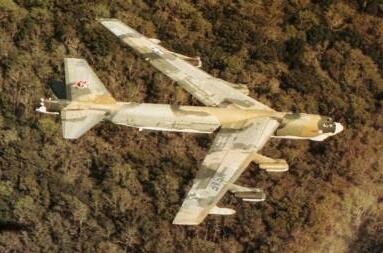 Ever since its introduction shortly before World War II radar has been used to detect aircraft. Additional uses for this new technology were soon found including assistance in targeting (for anti-aircraft guns and for bombing targets through overcast.) One of the most significant advances in the use of radar was the radar proximity fuse or VT fuse, developed by the Americans with British assistance. Flak (anti-aircraft fire) was proving devastatingly effective against Allied aircraft. It was soberly estimated that German flak would be three time more lethal if equipped with radar proximity fused shells. Thankfully, for the Allies, the Germans never developed a workable radar fuse, although they did develop a range of acoustic (sound activated) proximity fuses.
Ever since its introduction shortly before World War II radar has been used to detect aircraft. Additional uses for this new technology were soon found including assistance in targeting (for anti-aircraft guns and for bombing targets through overcast.) One of the most significant advances in the use of radar was the radar proximity fuse or VT fuse, developed by the Americans with British assistance. Flak (anti-aircraft fire) was proving devastatingly effective against Allied aircraft. It was soberly estimated that German flak would be three time more lethal if equipped with radar proximity fused shells. Thankfully, for the Allies, the Germans never developed a workable radar fuse, although they did develop a range of acoustic (sound activated) proximity fuses.
Radar is an active sensing device which transmits electromagnetic waves, usually in the microwave bandwidth, and listening to the returns (the radio waves bouncing off objects and travelling back toward the transmitter.) Since the speed of electromagnetic waves is known with great precision the distance to a target can easily be found by measuring the time delay between transmitting a radar pulse and receiving the echo. Different types of radar can find the approximate altitude and bearing of incoming aircraft. All this information gives the defender a clear idea of what's coming and lots of time to prepare for it. Interceptors can be launched, triple A and SAMs (surface-to-air missiles) can be readied to fire and engage the enemy planes.
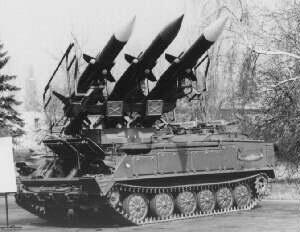 The introduction of radar directed AAA (anti-aircraft artillery) and SAMs (surface-to-air missiles) proved to be extremely lethal and was not fully appreciated until U.S. planes encountered an integrated air defense system over Vietnam. Also startling was the loss of at least 40 Israeli aircraft in the first two days of the Yom Kipper War in 1973 to AAA and SAMs. The extreme vunerability of US aircraft to AAA and SAMs in Vietnam forced the military to re-examine the means and methods of evading detection. SAM suppression aircraft (wild weasels) and radar seeking missiles were developed. These proved useful in reducing losses to radar directed anti-aircraft artillery and surface-to-air missiles, like the Russian SA-2, but weren't a total answer. Another avenue of approach was the use of low observable technologies (collectively known as stealth.)
The introduction of radar directed AAA (anti-aircraft artillery) and SAMs (surface-to-air missiles) proved to be extremely lethal and was not fully appreciated until U.S. planes encountered an integrated air defense system over Vietnam. Also startling was the loss of at least 40 Israeli aircraft in the first two days of the Yom Kipper War in 1973 to AAA and SAMs. The extreme vunerability of US aircraft to AAA and SAMs in Vietnam forced the military to re-examine the means and methods of evading detection. SAM suppression aircraft (wild weasels) and radar seeking missiles were developed. These proved useful in reducing losses to radar directed anti-aircraft artillery and surface-to-air missiles, like the Russian SA-2, but weren't a total answer. Another avenue of approach was the use of low observable technologies (collectively known as stealth.)
The primary method to reduce an object's RCS (radar cross section) is careful shaping. The answer to calculating the angles that radar waves bounce off a three dimensional object is hidden inside Maxwell's equations for electromagnetic radiation.
Project Harvey
In 1974 DARPA and the USAF began stealth research code named HARVEY after the invisible rabbit in the Hollywood movie of same name. RCS reduction was unclassified at this point. RCS stands for radar cross section and is the equivalent size that a plane appears to be on radar usually expressed in squarem or square ft (m).
Denys Overholser working at the Skunk Works of Lockheed-Martin began initial work in 1975 on low observable technologies (stealth).
A book published fifteen years before by an obscure Russian physict named Pyotr Ufimtsev turned out to be very important in making stealth a reality. The book entitled "Method of Edge Waves In The Physical Theory of Diffraction" made calculating the precise way electromagnetic waves scatter or reflect off three-dimensianal surfaces far easier. From this Overholser created EHCO 1, a software program that could perform these laborious calculations quickly.
It turned out that a diamond (flint) shaped object would work best in reducing Radar Cross Section (RCS.) In the Stealth (Low Observable Competition) the Northrop XST did have a relatively low RCS but the Lockheed design was practically invisible! In the wake of these results the entire project went black.
Have Blue
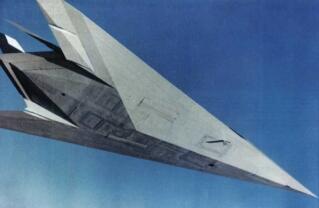 The two XST (Experimental Survivable Testbed) prototypes were produced under the code name Have Blue.
The two XST (Experimental Survivable Testbed) prototypes were produced under the code name Have Blue.
The two Have Blue aircraft were built at Lockheed in only a few months. The first example was intended to evaluate the type's flying characteristics, whereas the second was to evaluate the radar signature. In order to save some time and some money, existing off-the-shelf components were used where feasible. The engines were a pair of standard production non-afterburning General Electric J85s, mounted in enclosures sitting atop the wings. The main landing gear was taken from a Fairchild Republic A-10, and fly-by-wire components were scavenged from an F-16. The instrumentation and the ejector seat were taken from a Northrop F-5.
The Have Blue aircraft had the same general shape as that which would later become familiar with the F-117A, except that the twin rudders were located forward of the exhaust ejectors and were angled inward rather than outward. The inward cant was about 30 degrees. The leading edge of the semi-delta wing was swept back at 72.5 degrees. The wing featured two inboard trailing edge elevons for pitch and roll control. Four spoilers (two on top of the wing and two on the bottom) were mounted just forward of the elevons. There were no flaps or speed brakes. The wing trailing edge was less deeply notched than that of the F-117A. A single cockpit with an ejector seat was provided. The Have Blue aircraft employed V-type windshields (similar to those of the F-102/F-106). No weapons bay nor any sort of tactical equipment at all was fitted.
The Have Blue aircraft were equipped with fly-by-wire (FBW) flight controls which were adapted from the F-16 system. However, the system had to be modified to handle an aircraft that was unstable about all three axis (the F-16 is unstable only about the pitch axis). The problem of designing a stealthy system for airspeed measurement had not yet been solved, and XST-1 was equipped with a conventional pitot boom until March 1978. The boom was removed after it's 32nd flight. XST-2 never had the conventional pitot boom.
Two prototypes were built at a cost of $37 million for both aircraft. Lockheed workers assembled the two Have Blue aircraft in Burbank in Building 82, one of their big assembly hangers that was the size of three football fields. Reports that state the Have Blue were built in Lockheed's Plant 10 facility housed at the USAF Plant 42 in Palmdale, California are false.
Neither aircraft ever received an official DOD designation, or did they get a USAF serial number. However, Lockheed did give the aircraft its own manufacturer's serial numbers-1001 and 1002.
EXTERNAL DIMENSIONS: Wing Span 22 ft 6 in Length overall 47 ft 3 in Height overall 7 ft 6.25 in Wing Area 386 sq ft Wing Sweep 72.50 degrees Tail Cant 30 degrees Tail Sweep 35 degrees WEIGHTS AND LOADINGS: Weight (Empty) 8,950 lbs Max T-O weight 12,500 lbs Max Fuel Load 3,500 lbs Max Payload None ENGINES: Power Plant (#) GE J85-GE-4A (2) Power Plant Source T-2B Buckeye (no modifications made) Thrust About 2,950 lbs Specific Fuel Consumption About 0.98 PERFORMANCE: Max speed .8 Mach (600 mph) @ sea level Landing Speed 160 knots (296 km/h; 184 mph) Max Range/Endurance 1 hour
Have Blue Timeline
April 1976 - Lockheed Advanced Development Projects (Skunk Works) is awarded the contract for two 60-percent scale flyable test aircraft by the USAF Flight Dynamics Laboratory.
November 1977 - The first Have Blue aircraft (1001) is completed.
November 4, 1977 - Engine run tests are done.
November 16, 1977 - Have Blue prototype is shipped out to Groom Lake Test Facility in Nevada in high secrecy for the test flights.
December 1, 1977 - First flight of the Have Blue takes place shortly before 7am, with veteran Lockheed test pilot William M. "Bill" Park at the controls.
May 4, 1978 - On its 36th flight Have Blue prototype number 1001 is lost.
July 20 1978 - Have Blue prototype number 1002 takes to the air for the first time, with Lt. Col. Ken Dyson at the controls.
July 11, 1979 - Have Blue number 1002 is lost during its 52nd flight, with Lt. Col. Dyson at the controls.
Tacit Blue
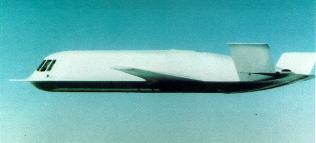
The Northrop made 'Tacit Blue' was a stealth test vehicle. Tactic Blue never went into production but yielded valuable data.
Northrop Tacit Blue Type: Specifications: Crew: pilot Length: 55.8 ft Wingspan: 48.2 ft Weight: 30,000 lbs Engines: Two high-bypass turbofans Garrett ATF3-6 5440 pounds thrust each
Flight control is supplied by a quadruply-redundant, digital fly-by-wire flight system that stabilizes the aircraft about the longitudinal and directional axes, much like the s.
Tacit Blue completed 135 flights over a three year period, with the maiden flight taking place on February, 1982. The aircraft logged three to four flights weekly and on several occasions flew more than one a day. TACIT BLUE owes some of its unique shape and size to the reconnaissance equipment it was designed to carry. A Hughes multi-mode-side-looking radar (SLAR) a predecessor to the ground surveillance radar used in Joint Stars, took up a large part of SHAMU's structure. The SLAR on TACIT BLUE was part of an effort to test if a LPI (low probability of intercept) radar could be flown on a stealth aircraft without compromising its presence. ELINT (Electronic Intelligence) antennas for intercepting enemy communications were also part of TACIT BLUE's reconnaissance systems.
There were a total of five pilots who flew the aircraft. The first was Dick Thomas, a Northop test pilot. The air Force pilots were Lieutenant Colonel Ken Dyson (who was also a HAVE BLUE pilot) and Lieutenant Colonels, Wes Easter, Don Cornell and Major Dan Vanderhurst.
Tacit Rainbow (AGM-136A)
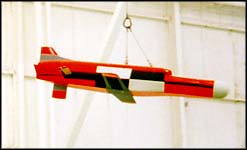
The first Tacit Rainbow air-launch occurred on July 30, 1984. More than 30 test launches were made, from both bombers and fighters. The MLRS launcher was also used for the Ground Launched Tacit Rainbow. The program was cancelled for budget reasons in 1991, prior to the planned start of production in 1992.
Bird of Prey
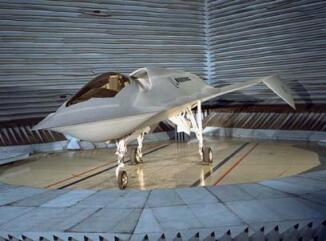
Fully funded by Boeing, the Bird of Prey project costs $67 million. A subsonic, single-seat technology demonstrator, the aircraft completed 38 test flights as part of its flight-demonstration program. Its first flight took place in fall 1996. Bird of Prey has a wingspan of approximately 23 feet and a length of 47 feet, and weighs nearly 7,400 pounds. Powered by a Pratt & Whitney JT15D-5C turbofan engine, the Bird of Prey has an operational speed of 260 knots and a maximum operating altitude of 20,000 feet.
Have Glass
Have Glass is the code name for a series of RCS reduction measures for the F-16 fighter. Its primary aspect is the addition of an indium-tin-oxide layer to the gold tinted cockpit canopy. This is reflective to radar frequencies, while it may seem odd, adding a radar reflective coating actually reduces the plane's visibility to radar. An ordinary canopy would let radar signals straight through where they would strike the many edges and corners inside and bounce back strongly to the source, the reflective layer dissipates these signals instead. Overall, Have Glass reduces an F-16's RCS (radar-cross section) by some 15 percent.
The Future of Stealth
The effectiveness of relatively inexpensive measures in rendering ordinary aircraft less visible to radar seems to argue against a wholesale switch to stealth aircraft. This is especially true when real world combat in Iraq and Kosovo demonstrate a level of air supremacy unparalleled in history. Its clear, though, that even with stealth the suppression of enemy air defenses will continue to be a vital component of any campaign.
 Ever since its introduction shortly before World War II radar has been used to detect aircraft. Additional uses for this new technology were soon found including assistance in targeting (for anti-aircraft guns and for bombing targets through overcast.) One of the most significant advances in the use of radar was the radar proximity fuse or VT fuse, developed by the Americans with British assistance. Flak (anti-aircraft fire) was proving devastatingly effective against Allied aircraft. It was soberly estimated that German flak would be three time more lethal if equipped with radar proximity fused shells. Thankfully, for the Allies, the Germans never developed a workable radar fuse, although they did develop a range of acoustic (sound activated) proximity fuses.
Ever since its introduction shortly before World War II radar has been used to detect aircraft. Additional uses for this new technology were soon found including assistance in targeting (for anti-aircraft guns and for bombing targets through overcast.) One of the most significant advances in the use of radar was the radar proximity fuse or VT fuse, developed by the Americans with British assistance. Flak (anti-aircraft fire) was proving devastatingly effective against Allied aircraft. It was soberly estimated that German flak would be three time more lethal if equipped with radar proximity fused shells. Thankfully, for the Allies, the Germans never developed a workable radar fuse, although they did develop a range of acoustic (sound activated) proximity fuses.  The introduction of radar directed AAA (anti-aircraft artillery) and SAMs (surface-to-air missiles) proved to be extremely lethal and was not fully appreciated until U.S. planes encountered an integrated air defense system over Vietnam. Also startling was the loss of at least 40 Israeli aircraft in the first two days of the Yom Kipper War in 1973 to AAA and SAMs. The extreme vunerability of US aircraft to AAA and SAMs in Vietnam forced the military to re-examine the means and methods of evading detection. SAM suppression aircraft (wild weasels) and radar seeking missiles were developed. These proved useful in reducing losses to radar directed anti-aircraft artillery and surface-to-air missiles, like the Russian SA-2, but weren't a total answer. Another avenue of approach was the use of low observable technologies (collectively known as stealth.)
The introduction of radar directed AAA (anti-aircraft artillery) and SAMs (surface-to-air missiles) proved to be extremely lethal and was not fully appreciated until U.S. planes encountered an integrated air defense system over Vietnam. Also startling was the loss of at least 40 Israeli aircraft in the first two days of the Yom Kipper War in 1973 to AAA and SAMs. The extreme vunerability of US aircraft to AAA and SAMs in Vietnam forced the military to re-examine the means and methods of evading detection. SAM suppression aircraft (wild weasels) and radar seeking missiles were developed. These proved useful in reducing losses to radar directed anti-aircraft artillery and surface-to-air missiles, like the Russian SA-2, but weren't a total answer. Another avenue of approach was the use of low observable technologies (collectively known as stealth.)  The two XST (Experimental Survivable Testbed) prototypes were produced under the code name Have Blue.
The two XST (Experimental Survivable Testbed) prototypes were produced under the code name Have Blue. 

